Scour is the main cause of calf mortality in the first four weeks of life and once the disease takes hold, it can be extremely hard to get on top of.
Where cows remain housed for a period after calving, management and shed hygiene is crucial to lowering the risk of scour.
Outlined are five steps to reducing the threat of calf scour this spring.
Colostrum
Get as much colostrum into the calf in the first six to 12 hours of life, especially if you have vaccinated against scour.
The calf’s ability to absorb antibodies deteriorates rapidly in the next 12 hours. There is no point vaccinating against scour if the calf does not get enough colostrum.
The majority of calves will suck their dam, making it impossible to know exactly how much colostrum the animal is getting.
So, as a simple rule of thumb, for every 10 minutes of continuous sucking, the calf should get around one litre of milk.
Straw, straw and more straw
Straw may be more expensive than in previous years, but it is cheaper than dealing with a scour outbreak.
Calves should always have a clean, dry lie. Wet and soiled bedding will pose a scour risk and lower the calf’s core body temperature, making it more susceptible to the disease.
If you cannot kneel on the straw bed without getting your knees wet, there is not enough straw present.
Give calves access to a creep pen or separate lying area
Calves should have access to a separate lying area or creep pen. This will ensure they have access to clean, dry bedding and lower the risk of scour.
Where cows are calved in individual pens, they should be moved to a group pen as soon as possible to allow calves access a straw-bedded creep area.
Otherwise, calves will be lying in a confined pen that can become heavily soiled. This soiling also poses a disease challenge to the next calf born in the pen.
Cleaning out sheds midway
In most cases, the risk of scour increases the longer cows remain housed after calving. This is due to scour pathogens building up in the shed and reaching a critical threshold.
Therefore, while you may be under extreme time pressure, cleaning out calving sheds and loose pens at least once by the midpoint of calving is recommended. This will help reduce scour pathogen levels before they get too high.
Avoid mixing older and younger calves
As calving progresses and scour pathogens build up, the youngest calves will be more vulnerable to the disease compared with older calves.
Where possible, keep the oldest calves born in the first half of the calving period together as one group and the younger, later-born calves as a second separate group.
This will help cut down the transmission of scour pathogens between older and younger animals.
Read more
Cattle trade on fire as beef price passes €5/kg
Top tips for storing colostrum
Scour is the main cause of calf mortality in the first four weeks of life and once the disease takes hold, it can be extremely hard to get on top of.
Where cows remain housed for a period after calving, management and shed hygiene is crucial to lowering the risk of scour.
Outlined are five steps to reducing the threat of calf scour this spring.
Colostrum
Get as much colostrum into the calf in the first six to 12 hours of life, especially if you have vaccinated against scour.
The calf’s ability to absorb antibodies deteriorates rapidly in the next 12 hours. There is no point vaccinating against scour if the calf does not get enough colostrum.
The majority of calves will suck their dam, making it impossible to know exactly how much colostrum the animal is getting.
So, as a simple rule of thumb, for every 10 minutes of continuous sucking, the calf should get around one litre of milk.
Straw, straw and more straw
Straw may be more expensive than in previous years, but it is cheaper than dealing with a scour outbreak.
Calves should always have a clean, dry lie. Wet and soiled bedding will pose a scour risk and lower the calf’s core body temperature, making it more susceptible to the disease.
If you cannot kneel on the straw bed without getting your knees wet, there is not enough straw present.
Give calves access to a creep pen or separate lying area
Calves should have access to a separate lying area or creep pen. This will ensure they have access to clean, dry bedding and lower the risk of scour.
Where cows are calved in individual pens, they should be moved to a group pen as soon as possible to allow calves access a straw-bedded creep area.
Otherwise, calves will be lying in a confined pen that can become heavily soiled. This soiling also poses a disease challenge to the next calf born in the pen.
Cleaning out sheds midway
In most cases, the risk of scour increases the longer cows remain housed after calving. This is due to scour pathogens building up in the shed and reaching a critical threshold.
Therefore, while you may be under extreme time pressure, cleaning out calving sheds and loose pens at least once by the midpoint of calving is recommended. This will help reduce scour pathogen levels before they get too high.
Avoid mixing older and younger calves
As calving progresses and scour pathogens build up, the youngest calves will be more vulnerable to the disease compared with older calves.
Where possible, keep the oldest calves born in the first half of the calving period together as one group and the younger, later-born calves as a second separate group.
This will help cut down the transmission of scour pathogens between older and younger animals.
Read more
Cattle trade on fire as beef price passes €5/kg
Top tips for storing colostrum



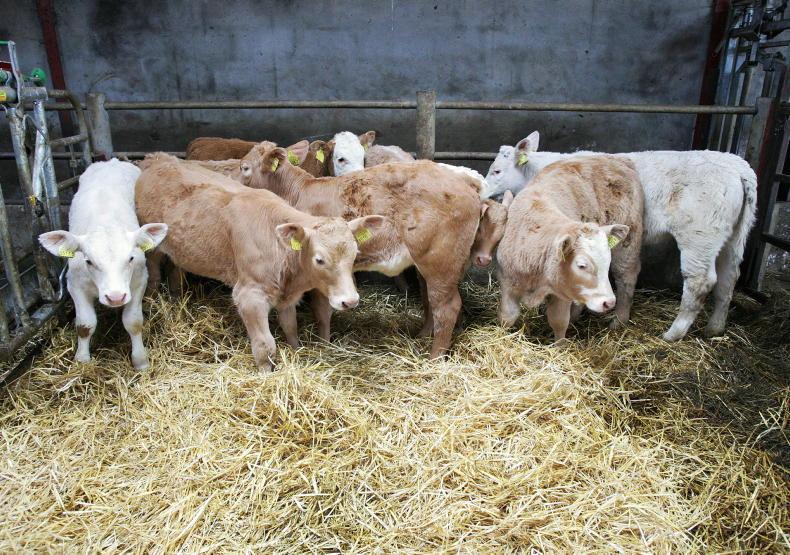

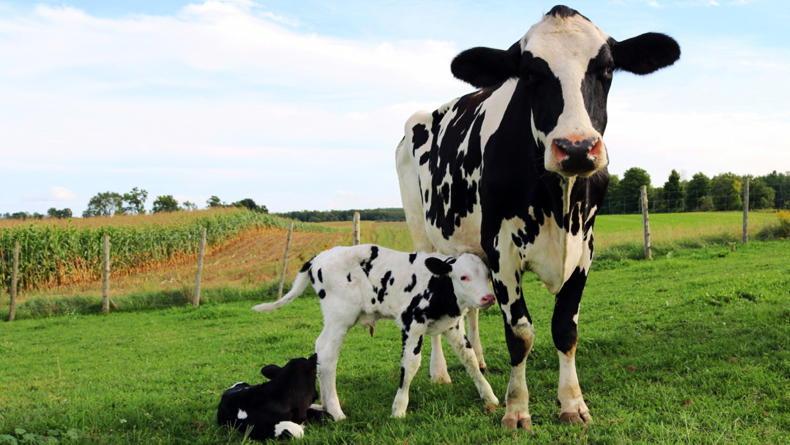
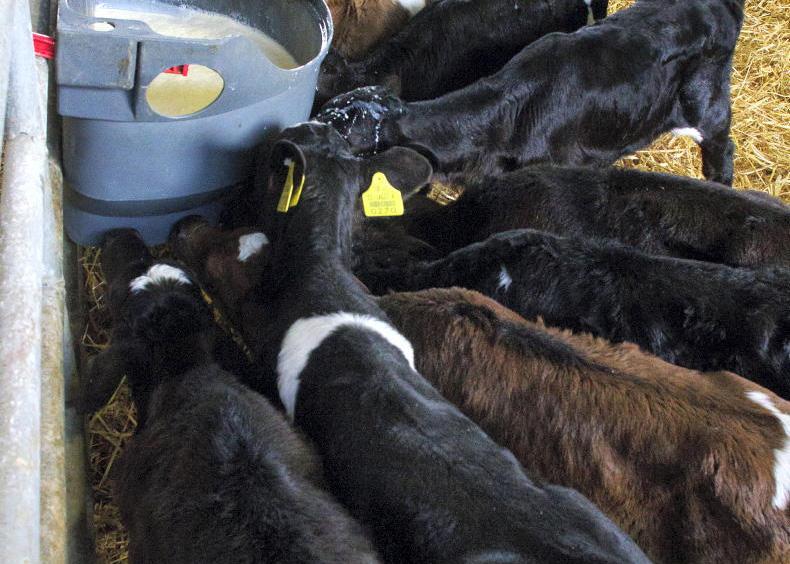
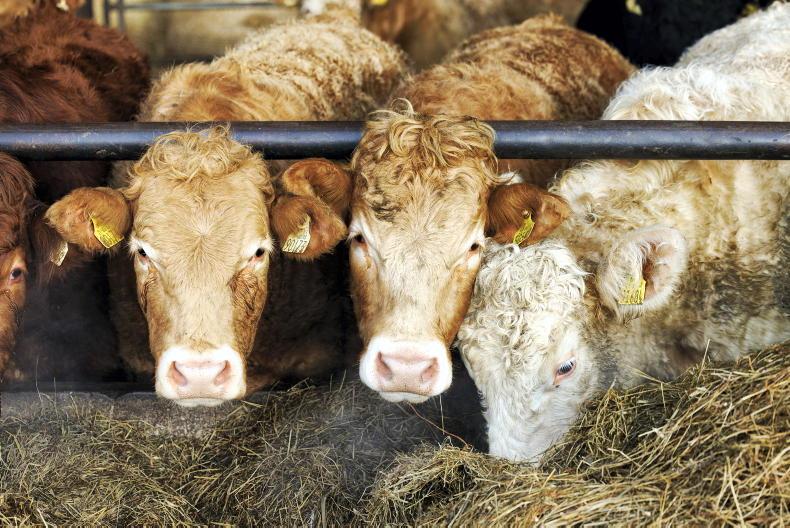
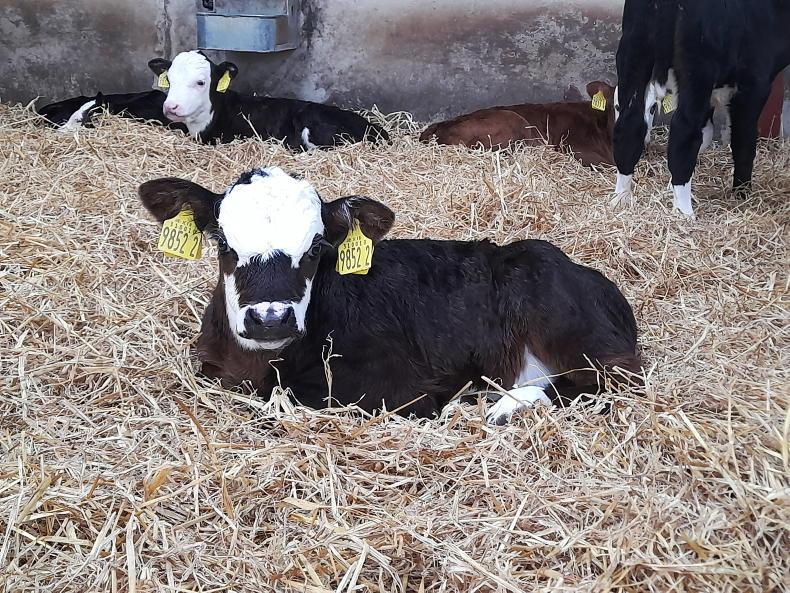
SHARING OPTIONS